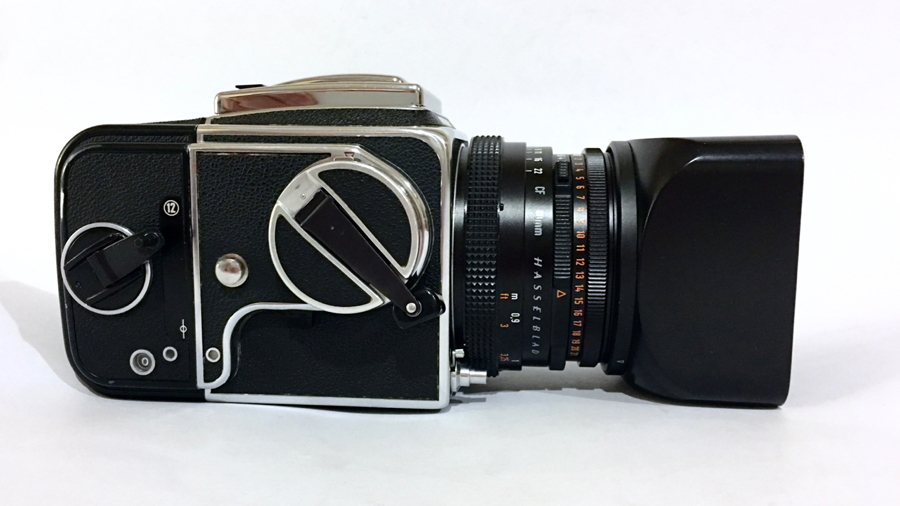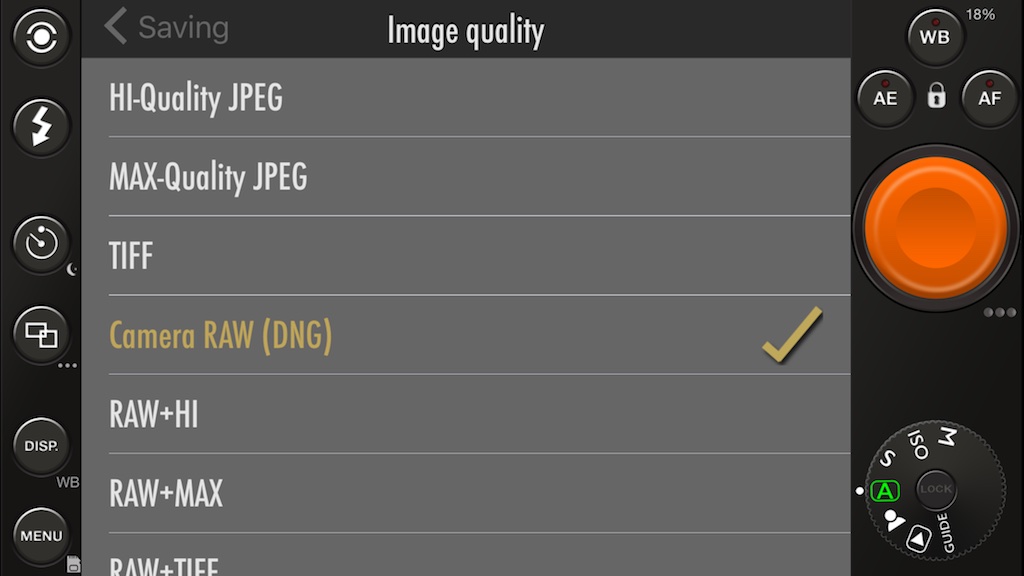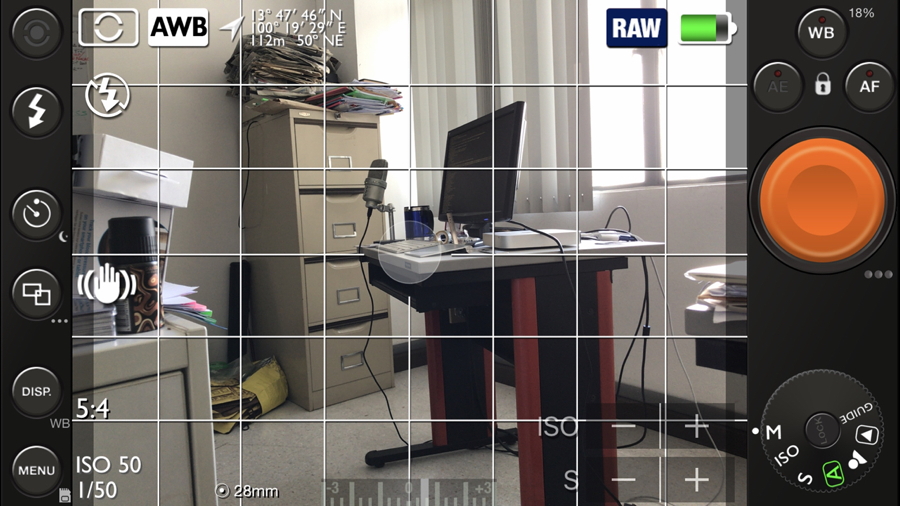Update to Pure Shot: More RAW on iOS - Amended and Corrected

eXtensions - Thursday 1 December 2016
|
Update to Pure Shot: More RAW on iOS - Amended and Corrected |
 |
|
|
By Graham K. Rogers
The developer Michael Hardaker (Jaggr) has a number of apps that emulate film format cameras, like 6x6 and 6x7 and it was his 645 Pro that had me looking seriously at film again, to the extent that I bought an older Hasselblad camera and started using film again seriously.


With the update of Pure Shot to version 5.0, as well as the previous file types there are now several file-saving options:

Before I was able to install the update, the way I had the screen set up (5:4) along with the TIFF file saving gave me images of 35 MB at a resolution of 4032 x 3024. Other resolutions available are 1:1, 4:3, 3:2 and 16:9.

I am told that "The iPhone's internal system can only read the preview JPEG, and it reads the file size off that; [the] metadata tool does give . . . the master file size too." When the images appeared in Photos on the Mac the same metadata was shown, but transfers to Aperture gave a different view, with those images showing a size of 4032 x 3024 (12.2 MP) but still with the same file size of a little over 10 MB. When I exported one of the images from Photos to the Desktop as a TIFF image, it had the same size as the one I had exported from the previous version of Pure Shot. If the original DNG image is 852 x 640 and the exported version 4032 x 3024 at 72 pixels/inch, a rough calculation suggests the apparently small file on the iPhone has a resolution of approximately 340 pixels/inch. As before, whenI exported the image from Photos as a full size TIFF image, the file was some 73MB: 42" x 56" - no mean feat for an iPhone.
Graham K. Rogers teaches at the Faculty of Engineering, Mahidol University in Thailand. He wrote in the Bangkok Post, Database supplement on IT subjects. For the last seven years of Database he wrote a column on Apple and Macs. He is now continuing that in the Bangkok Post supplement, Life. He can be followed on Twitter (@extensions_th) |
|

For further information, e-mail to
Back to
eXtensions
Back to
Home Page